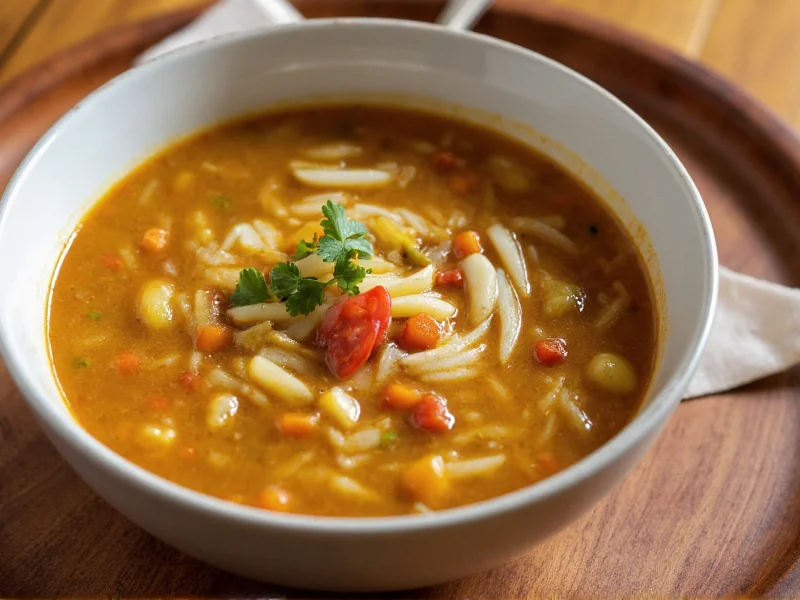For centuries, cultures worldwide have turned to soups as comforting remedies during times of illness or recovery. From Jewish penicillin (chicken soup) to Asian bone broths and Latin American caldo, these culinary traditions share common elements that modern science is beginning to validate. The true power of healing soups lies not in miraculous cures but in their ability to deliver essential hydration, nutrients, and comfort when the body needs them most.
The Science Behind Soup and Wellness
When you're feeling under the weather, your body requires specific support that healing soups uniquely provide. Research published in the journal Chest demonstrates that hot chicken soup can inhibit neutrophil migration, potentially reducing inflammation associated with upper respiratory infections. The steam from hot soup helps clear nasal passages, while the liquid content provides crucial hydration—especially important when illness reduces appetite.
Nutritionally, well-prepared healing soups offer multiple benefits:
| Nutrient | Healing Function | Common Soup Ingredients |
|---|---|---|
| Electrolytes | Maintain fluid balance | Vegetable broths, miso, seaweed |
| Vitamin C | Supports immune function | Lemon, tomatoes, bell peppers |
| Zinc | Aids immune cell development | Mushrooms, legumes, meat |
| Gelatin | Supports gut health | Bone broths, slow-simmered meats |
Cultural Traditions of Healing Soups
Every major culinary tradition features its own version of healing soups, reflecting generations of practical wisdom. In Chinese medicine, herbal soups simmered for hours combine ingredients like goji berries and astragalus root to support specific bodily systems. Japanese miso soup, traditionally served at every meal, contains fermented soybeans rich in probiotics that support gut health—a critical component of overall immunity.
Eastern European borscht combines beets, cabbage, and dill, creating a nutrient-dense broth with antioxidant properties. Mexican caldo de pollo typically includes epazote, a herb believed to aid digestion. These traditional recipes weren't developed through clinical trials but through centuries of observation about what helps people feel better during recovery.
Key Ingredients in Traditional Healing Soups
Understanding the functional components of healing soups helps separate evidence-based benefits from folklore. Three ingredients consistently appear across cultures with scientific backing:
- Ginger: Contains gingerol, which has demonstrated anti-nausea effects in multiple studies. Particularly effective in Asian ginger chicken soups for settling upset stomachs.
- Garlic: Allicin, its active compound, shows antimicrobial properties. Many traditional recipes like Korean miyeokguk (seaweed soup) incorporate garlic for immune support.
- Turmeric: Curcumin provides anti-inflammatory benefits. Indian rasam often includes turmeric for this reason.
When preparing nutrient-dense healing soups, simmering bones for 12-24 hours extracts collagen and minerals that support joint and gut health. The slow cooking process also makes nutrients more bioavailable—easier for your body to absorb when you're not feeling your best.
What "Healing" Really Means in Context
It's crucial to understand that healing soups support wellness but don't replace medical treatment. The term "healing" in this context refers to:
- Providing comfort that reduces stress during illness
- Delivering hydration when fluid intake is challenging
- Offering easily digestible nutrients when appetite is low
- Supporting the body's natural recovery processes
A 2020 review in Nutrients journal confirmed that chicken soup's benefits come from its combination of vegetables, protein, and warm liquid—not any single "magic" ingredient. The psychological comfort of familiar, homemade soup also plays a role in the healing process, demonstrating the mind-body connection in recovery.
Three Evidence-Inspired Healing Soup Recipes
Classic Anti-Inflammatory Chicken Soup
This adaptation of the traditional Jewish penicillin incorporates ingredients with documented benefits:
- 1 organic chicken carcass (simmered 4+ hours for bone broth)
- 2 chopped carrots (beta-carotene)
- 2 chopped celery stalks (anti-inflammatory compounds)
- 1 onion with skin (quercetin)
- 3 garlic cloves, crushed
- 1-inch ginger, sliced
- Small bunch fresh parsley
- Pinch of turmeric
Simmer vegetables in the broth for 30 minutes. Remove from heat and add fresh lemon juice before serving to preserve vitamin C.
Miso-Turmeric Broth
A vegan option rich in probiotics and anti-inflammatory compounds:
- 4 cups vegetable broth
- 3 tbsp white miso paste (added after cooking)
- 1 tsp turmeric
- 1-inch ginger, grated
- 1 clove garlic, minced
- 1 sheet nori, torn
- Scallions for garnish
Bring broth to near-boil, then remove from heat. Whisk in miso paste (high heat destroys beneficial bacteria). Add remaining ingredients and let steep 5 minutes.
Making Healing Soups Part of Your Wellness Routine
For maximum benefit, incorporate healing soups strategically:
- Prevention: Regular consumption of nutrient-dense broths supports gut health and immunity
- Early symptoms: At first sign of illness, increase soup intake for hydration and nutrients
- Recovery phase: Continue soups as appetite returns to rebuild strength gently
Freeze portions of homemade healing soups for quick access during illness. Glass containers work best for preserving nutrients—avoid plastic when storing acidic ingredients like tomatoes or lemon.
When to Seek Professional Medical Care
While healing soups provide valuable support, they're not substitutes for medical treatment. Consult a healthcare provider if:
- Symptoms persist beyond 7-10 days
- You experience high fever (over 103°F/39.4°C)
- Difficulty breathing occurs
- Signs of dehydration appear (dark urine, dizziness)
Nutrition supports healing but doesn't replace necessary medical interventions. The most effective approach combines traditional wisdom with modern medical care when needed.











 浙公网安备
33010002000092号
浙公网安备
33010002000092号 浙B2-20120091-4
浙B2-20120091-4